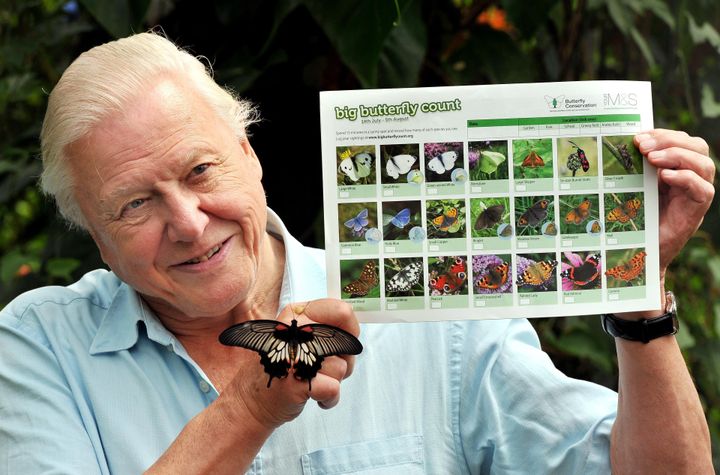Sir David Attenborough is encouraging the British public to take part in the annual Big Butterfly Count as the nationwide survey enters its eighth year.
The veteran broadcaster says watching nature in your garden provides “precious breathing space” from the pressures of modern life, not to mention giving something for your children to do in the summer holidays.
Running from 20 July to 12 August, all it requires you to do is sit outside (preferably in the sunshine) for 15 minutes and observe the wildlife.

Attenborough, the president of Butterly Conservation - the charity running the event - said doing so “never fails” to bring him great pleasure.
“I have been privileged to have witnessed some truly breath-taking wildlife spectacles in far-flung locations but some of my most memorable experiences have happened when I’ve been simply sitting and watching the wildlife that lives where I do,” he said.
“It enables us to experience joy and wonder, to slow down and to appreciate the wildlife that lives side by side with us.”
Mental health charity Mind is also supporting the event as a “wonderful way of interacting with the environment” and championing the benefits of spending time in nature. Research has shown it can help alleviate depression and anxiety.
“It enables us to experience joy and wonder, to slow down and to appreciate the wildlife that lives side by side with us.””
- David Attenborough
The big butterfly count was launched in 2010 in an attempt to assess the state of the nation’s wildlife, and has rapidly become the world’s biggest survey of butterflies: last year over 60,000 people took part.
Described as “taking the pulse” of nature, butterflies are one of the species that react very quickly to change in their environment, making them excellent biodiversity indicators. In short, if the number of butterflies is declining, it is a warning sign for other losses to come.
This year’s survey is particularly important because of the ongoing heatwave in many parts of the UK: the drought in 1976 decimated populations of butterflies.
Although researchers have reason to be optimistic as so far we have had the right combination of a cold winter, a settled late spring and late summer so far this year, enabling spring butterflies to thrive.

If you want to take part all you need to do is pick a bright day and have fifteen minutes to spare: sit in a fixed position in your garden, a local park, fields or forests and count the maximum number of species you can see at a single time.
For example, if you see three Red Admirals together on a bush then record it as 3, but if you only see one at a time then record it as 1 (even if you saw one on several occasions) – this is so that you don’t count the same butterfly twice.
If you are doing your count on a walk, then simply total up the number of each butterfly species that you see during the 15 minutes. You can download a butterfly identification chart here.
Despite the largest number of people taking part in the survey last year the average number of butterflies seen per 15 minute count was the lowest recorded since the survey started.
David Attenborough isn’t the only famous face championing the cause - Alan Titchmarsh and Joanna Lumley have also given their backing to the project.